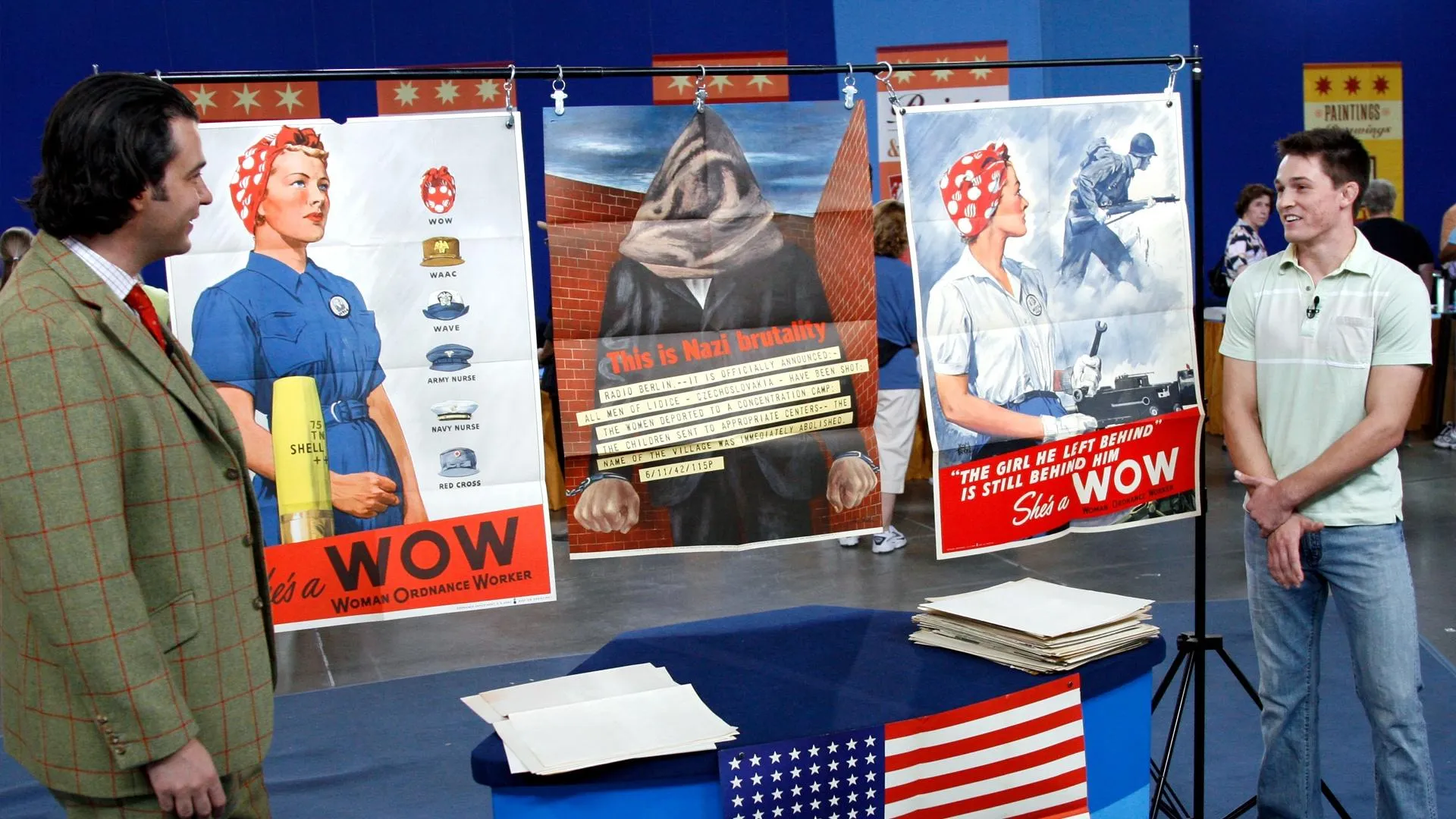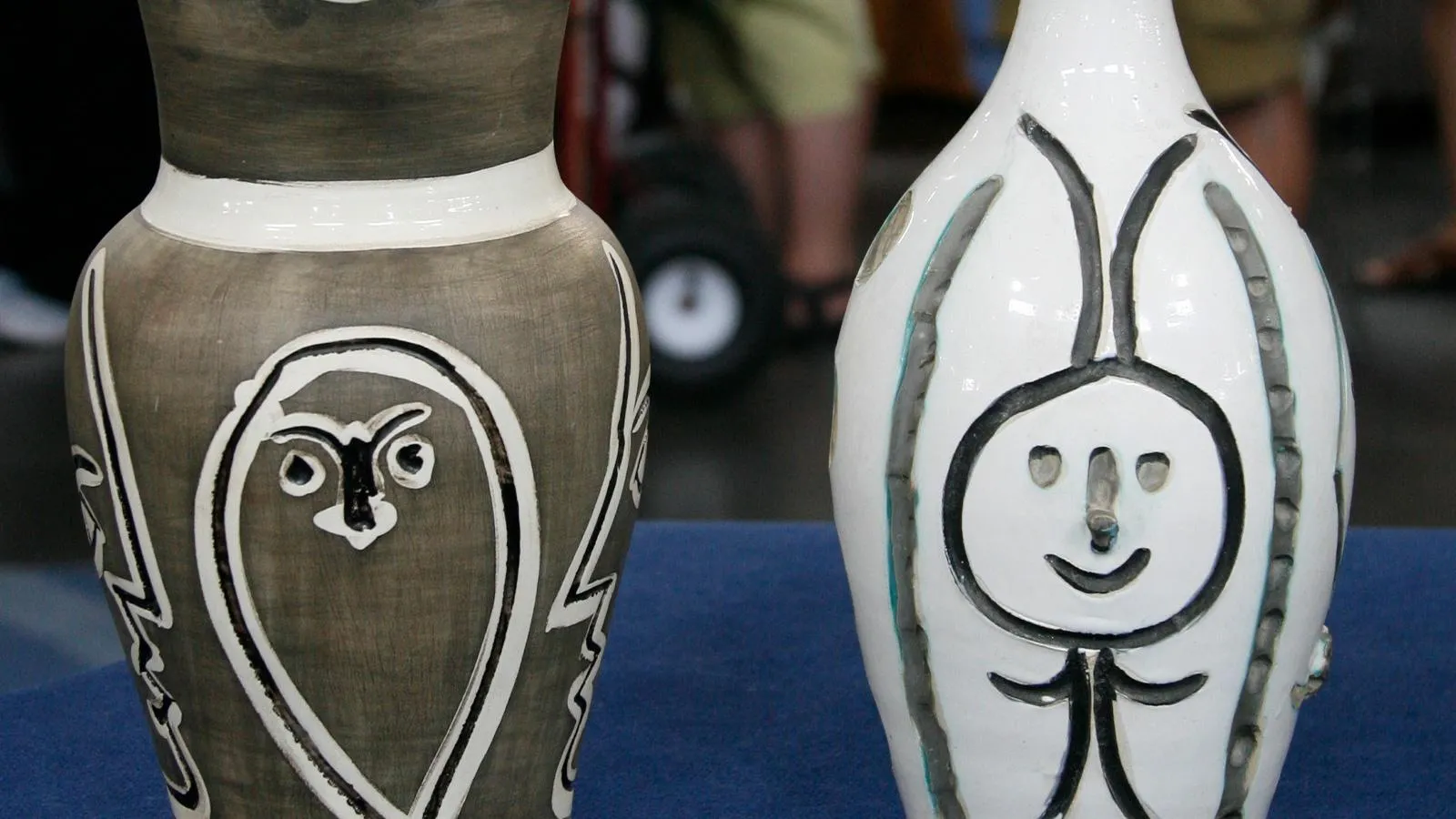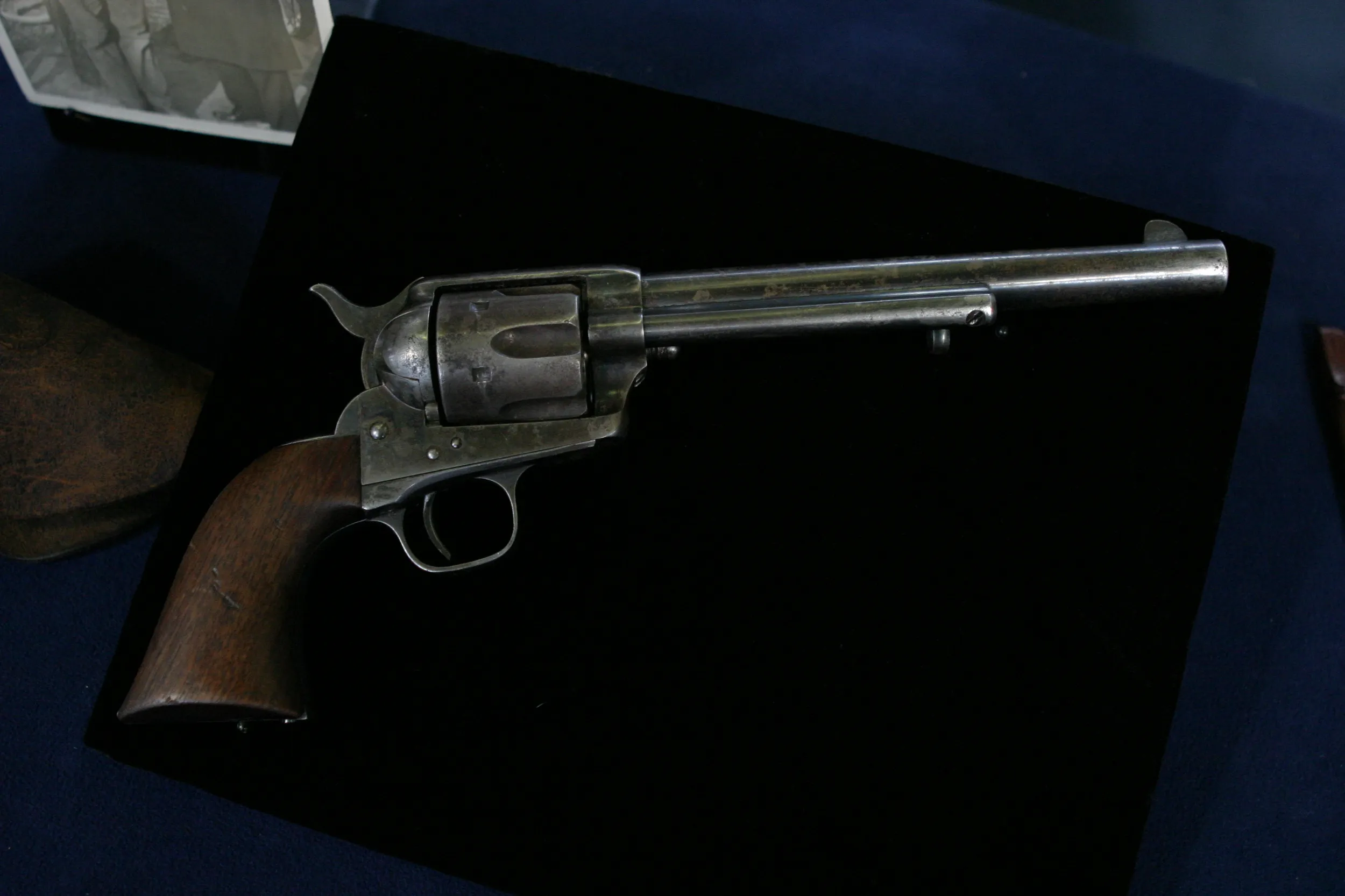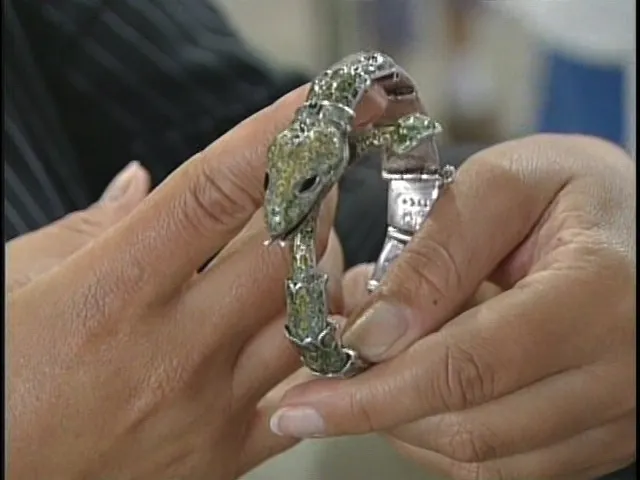GUEST: Well, it was my grandfather's. He grew up in L.A., was born in 1902, and I don't know whether he was the original person that had it or whether it was even his father, just don't know.
APPRAISER: Well, you probably hear us on the ROADSHOW talk a lot about Steiff, and Steiff is Margarete Steiff from Germany, and is the pre-eminent maker of teddy bears. But this is not your run-of-the-mill Steiff teddy bear, and it is very important that you said 1902. Now, 1902 was a significant year because Richard Steiff was the original designer of the Steiff bear. And in 1902, he experimented with how to join a bear with stringing or, what we have here is what we call a rod bear, and this is a 1903 Steiff rod bear. Running in the body from one arm to the other arm, and in a T-fashion to the head, is a rod. So if you took an X-ray of the bear, you would see metal rods, and the same for the legs. There's a rod running from this leg to that leg. Now, later on, they got rid of that rod and just did simple disked joinery. It was made in 1903 and was premiered at the Leipzig Toy Fair. Now, it did not run into production for very long. And there's some significant differences between a rod bear and a standard early Steiff teddy bear. And the first one we can talk about is this nose. Now, the nose is not a stitched nose, like a later Steiff bear. It's made out of gutta-percha. It was soft when it was new. It's molded, and it looks more realistic, like a real bear's nose. This is the only model that carried a gutta-percha nose. Now, it has the typical shoe-button eyes, but what's different about a rod bear is, the head is a little bit lower, the ears are lower down, and the way the head sits on the torso is different. It's very distinct. It has the original five stitched claws. It's excelsior stuff, which is like wood shavings. It has the original felt pads, and it's... Originally, it would have come with an elephant-type button-- it is missing the button. And the button would have been right here, which was very early, and it's... It's sad that it's not there. It does have a little mohair loss to the head, but the body is quite nice. And you have the original clothing that your family has made for him, which is nice for him and it gives him a lot of character. The clothes protected the body. If you look at the body, it's in better condition than the head.
GUEST: So this is all custom-made clothes, though.
APPRAISER: Yeah, it's homemade clothes. So to have that, too, helps with the appeal of the bear. It's the rarest of Steiff bears. To the, the bear market, a fair auction estimate would be $8,000 to $10,000.
GUEST: (chuckles)
APPRAISER: Now, recently, a bear in slightly better condition, with all the mohair on the head, sold for $17,000. So that shows you how desirable this very early, Richard Steiff-designed rod bear is.
GUEST: That's amazing. Uh... I'm kind of blown away, to be honest. It was just something that was up in the hallway closet, and not played with or not used, and thank goodness for that.












